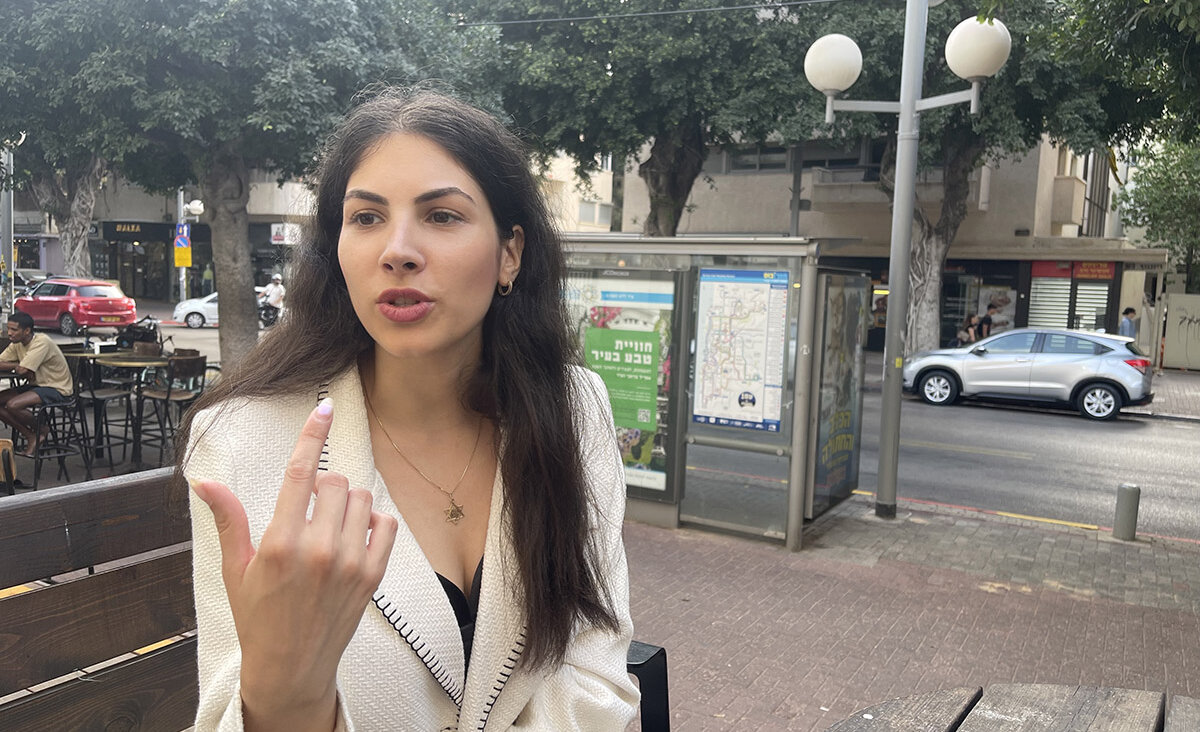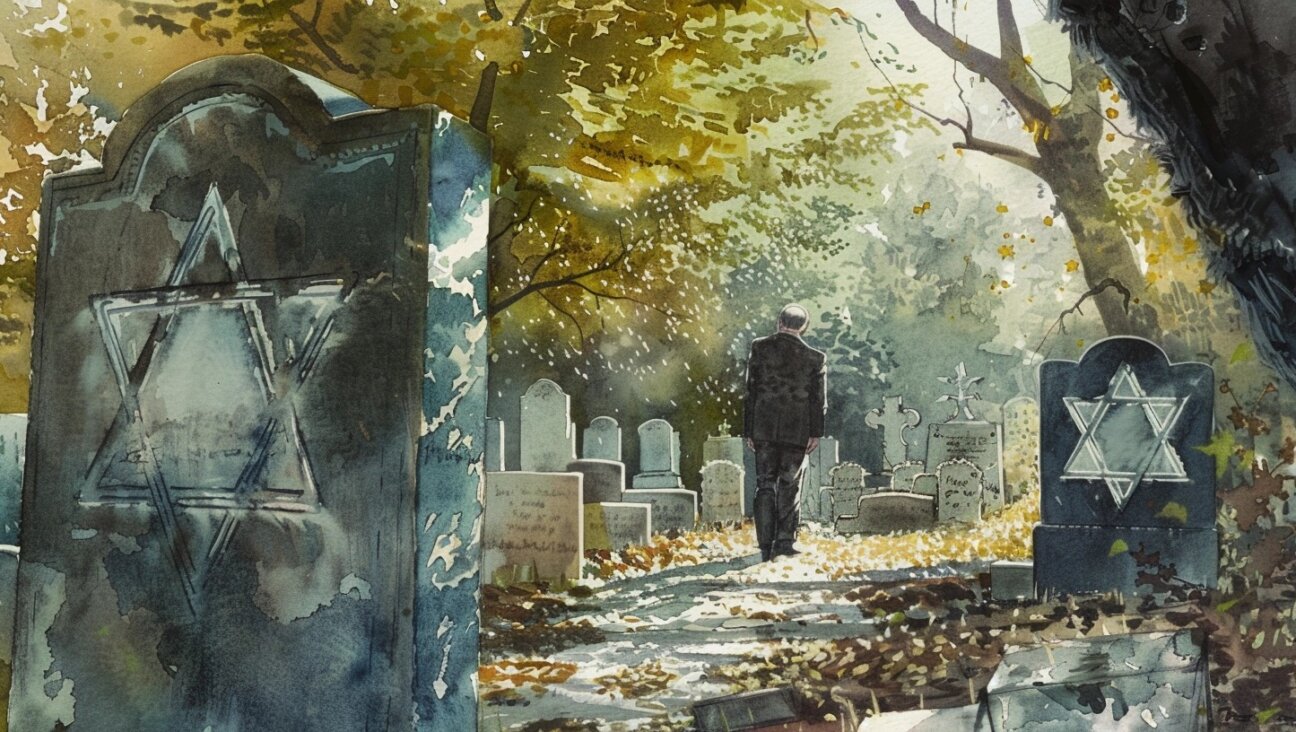The ‘Shidduch Crisis’ Has Led to an Orthodox Obsession with Female Beauty

Hadas Yaron in “Fill the Void”. Image by Sony Pictures
“We usually don’t take a car,” the yeshiva boy says to the driver, an older Irish man with a hearty laugh and a dapper straw hat. “But the lady was inappropriately attired (he winks at his date), in her heels I mean, so we had to…”
The yeshiva boy’s date cuts him off and leans forward to the driver, deciding to turn her frustrations into a joke: “Sir, he doesn’t really care about the heels. It’s my actual choice of attire that he finds inappropriate. My skirts are too short, it makes him nervous, he won’t even call me by my name, you know how religious boys are…”
The driver turns the corner. “That’s the problem with religion, it’s sexist,” he says, looking at her in his mirror. “I know because my parents were religious Catholics. It’s all a bunch of sexist garbage.”
The boy and girl laugh nervously over the profanity, and the girl says slowly, “Well, I don’t think religion itself is sexist, it’s just that chauvinists still exist…” She casts the boy a look.
The boy turns back to the driver: “But don’t you agree, sir, that if you have the most precious diamond in the world, you keep it wrapped up? You don’t take it to the streets to show the entire world?”
The girl gasps silently — she is taken backwards in time, back to the apologetics they taught in 7th grade, again and again, bas melech, kol kvoda pnima, a princess’s honor is all inside, a divine jewel to be kept hidden…
But before she can respond, the driver presses the brakes. He turns around and faces the yeshiva boy, and says slowly, his voice shaking with rage: “Listen to me, boy. This is not an object you’re talking about. This is a living, breathing human being.”
Several years have passed since that day: an era of shidduch [arranged] dates, resumes, phone calls, reference checks. Marriage has indeed brought me that promised calm — a constant sigh of relief I didn’t know was possible, a sense of mafia-level protection. No more being bothered by older women. I had finally crossed the line to safety. And only recently, it hit me how much life has changed, when I was dancing at a wedding the other day.
The trumpets blared, the walls of the hall shook, and I noticed it in the eyes of the single girls dancing. The girls were eyeing me carefully, the way a student eyes the principal, hoping she won’t catch her dress code infraction.
With a snap of the fingers, I had become that ‘young married woman,’ that woman flicking her wig bangs away from her eyes. It is for her that girls fuss when preparing for a wedding — plastic surgery, hair blown out, manicures, expensive dresses, high heels (within some boundaries of modesty, surely) — not so much for the men, no, the young single men will barely get a glimpse of the young single women at these weddings with separate seating. No, this whole ritual is done for the married women — for the mere hope that one wigged lady sees her, at the sushi station perhaps, walks over and with a swish of her wand, says, “My God, you’re gorgeous, I know someone perfect for you. From a well-to-do family, too.”
Suddenly, I am being asked to set up matches — though it feels like moments ago that I was that girl being set up and attending weddings like some beauty pageant. And I’ve gotten used to it: the sought-after bachelors, the bustling matchmakers, the frantic parents. Photos are shown on phones, forwarded by email and WhatsApp.
“I need a gorgeous girl,” one older businessman tells me over the phone, his intonations straight out of the ultra-Orthodox yeshiva. I say that I may have a young woman for him, it might be worth a date. Then I think it over again and say, actually, I’m so sorry, I just realized that she’s not for you, sorry, never mind, I will think of someone else.
He is offended. He’s already seen her picture — he is struck by her beauty. “But why? Why isn’t she for me?”
I sigh and finally admit: “She’s looking for an erudite, a Harvard boy, someone really intellectual, worldly…”
“That’s not fair,” he objects. I am not allowed to judge, he says.
“So, let me get this straight,” I fire back. “Your demands for a gorgeous girl must be met, yet her demands for an intellectual mean nothing? Why is that any more harsh?”
Now, I get to hear the other side of the Orthodox dating world, that of the ‘matchmaker’: “She’s not so gorgeous. She can use some work. And I mean work. Her hair is too curly. Her teeth are a bit crooked. She never wears heels. She ought to dress a bit more expensive, she can’t afford not to. She’s not so thin, a size six, on the heavy side really.”
I listen and nod, head spinning with my own memories. The pressure on these young women is unbearable — I look at their smiling kind faces, pictures taken at cousins’ weddings and at summer camps hugging special needs children, and wonder how it must have been for them to not concern themselves with their own outsideness until the moment they came back from seminary and became shidduch-debutantes. Or even earlier, I am told — here, it’s not uncommon for a young man to refuse to go out with a girl because he heard that she was once overweight in high school.
My mind rushes to the years of starving, the endless salon sessions, never venturing outside without full makeup, the way my shopping trips grew more and more exorbitant as the dating adventures went on. I still can’t believe I got married without having to go under a knife — never mind without a dowry, Jerusalem apartment or trust fund — the recent TIME magazine piece did not exaggerate. (It’s 2015, and men will still compliment my husband on marrying for love.) But do I regret those years, invested in looks? No, the power of feeling young and possibly beautiful was too much fun. Perhaps it was my Russian blood which allowed me to enjoy it: “Tonight, I am Natasha Rostova,” I used to half-pray, invoking the Tolstoy heroine before stepping out for a date.
But this is the reality of the “elite” of the religious world. And I don’t need to write this. Simply sit down in a wig shop and listen to the women getting their wigs styled next to you — or peruse the advice columns of the Haredi press, read the letters of parents besides themselves, concerned for their single daughters, how to afford luxe Passover programs for the sake of their daughters being seen in the dining room by the right families (note: the more nursing homes the family owns, the better), and then, when the redemption finally arrives, how to afford that lavish wedding.
So when I am told constantly, that the religious world protects women from being objectified, by omitting their images — that this reflects some “essential community value” of appreciating women’s inner beauty over externals, I can’t help but laugh at how out of touch this is from reality. It’s a joke. Simply look at our eating disorder numbers. Or ask any young Orthodox woman who has gone through or continues to go through the system of shidduchim, that all-powerful machine which ensures communal obedience — here, where she is promised to be protected from the evils of secular dating, where women are so clearly objectified, girls, just look at them, how disgusting it is, people with no morals — and she will tell you just how lofty-spirited her community experience is.
Is this shocking? That this is where we have come to? When we nod away and accept that women ought to be hidden, like “jewels” — is it shocking that we have created a generation of young women forced to become dolls? That they are, in effect, only further objectified and thus sexualized? When their modest pictures remain forbidden, when religious women’s magazines only portray empty beach chairs and empty kitchens, where women are mere ghosts — what exactly is the message being sent to my generation of bright, religiously passionate women, who are anyways stowing the September issue of Vogue under their beds? That they are dangerous creatures? That there is no middle ground? That they are at once expected to be hidden yet also on display? Today’s religious woman is caught between two extreme worlds — a religious world which offers only contradictions, which tells us that our beauty is key to happiness in life yet we should also hide ourselves lest we attract attention, and a secular world which seems to equate liberty with exhibitionism.
As a religious person, I find the debate over women’s images in publications in itself embarrassing. I suspect it has plunged many a young woman’s rather-clean-mind into some wild, terrifyingly imaginative conjuring of male desire. The more I think about this debate, the more I have trouble walking in Borough Park without it plaguing my mind, without religious male desire suddenly lurking right below the surface of every street, every corner.
In a world where I am told by respected leaders that mere images of modest women are offensive, that Talmud learning for women leads to the destruction of Orthodoxy, and that God willing, my future daughters’ worth will lie in their looks alone — I wonder how on earth one can be expected to raise daughters here in honesty. And how on earth, as a rabbi’s wife, do I tell the starry-eyed young women who approach me with questions about religion, that religious society embraces them as minds, not merely temptations?
When thinking about the next generation, I am reminded of Daisy Buchanan’s haunting words about her own small daughter: ”I hope she’ll be a fool — that’s the best thing a girl can be in this world, a beautiful little fool.”
I have written about this before, and years and dates and sagas and an engagement and wedding later, I sense this is an epidemic, this Orthodox obsession with externals.
Now, I defer to the opinions of those who defend a community’s sensitivities, market forces, and so on — perhaps because I have no other choice.
But today’s young “Haredi” women, in wigs and tights, who sway just as fervently over their prayers, are beginning to wonder aloud. This is evident in Kikar Shabbat, Israel’s most powerful of Haredi publications online, which features images of women who are modestly dressed. It was evident, decades ago, when the Lubavitcher Rebbe insisted that all children’s educational materials include pictures of girls as well as of boys on the cover (“There must be a girl!” he would write in Hebrew on any magazine that lacked a girl’s picture). And it is evident on social media today, on Instagram feeds and private Facebook and WhatsApp groups — where religious women are creating their own alternative media, a place where their faces can exist.
I recommend that the leadership remain ahead of the game.
But until then, we will remain intimidated, once again, by the Party, by the “haram police”, as I once overheard a young Muslim say. The holiest and most pious, whose stringencies distort our religious law. Because we are afraid of making changes. And we don’t want to ‘impose’ our liberal views on our holy brethren either.
So we stay silent. We nod when we are told that we are being protected from objectification. We roll our eyes, slightly. And then we totter on our heels to the next wedding, to see and be seen.

I hope you appreciated this article. Before you go, I’d like to ask you to please support the Forward’s award-winning journalism this Passover.
In this age of misinformation, our work is needed like never before. We report on the news that matters most to American Jews, driven by truth, not ideology.
At a time when newsrooms are closing or cutting back, the Forward has removed its paywall. That means for the first time in our 126-year history, Forward journalism is free to everyone, everywhere. With an ongoing war, rising antisemitism, and a flood of disinformation that may affect the upcoming election, we believe that free and open access to Jewish journalism is imperative.
Readers like you make it all possible. Right now, we’re in the middle of our Passover Pledge Drive and we still need 300 people to step up and make a gift to sustain our trustworthy, independent journalism.
Make a gift of any size and become a Forward member today. You’ll support our mission to tell the American Jewish story fully and fairly.
— Rachel Fishman Feddersen, Publisher and CEO
Join our mission to tell the Jewish story fully and fairly.
Only 300 more gifts needed by April 30

























